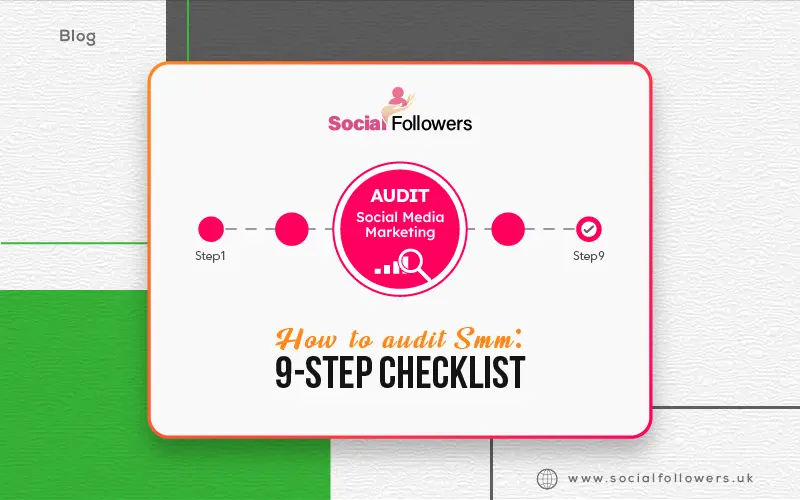Social media marketing now makes up the majority of digital marketing. Social media platforms are used for marketing. LinkedIn, Facebook, Instagram, Twitter, TikTok, and other social platforms are widely and extensively used for marketing purpose. Businesses can connect, interact, and communicate with their target audiences using social media communities. These platforms are used by over a billion people worldwide. Nevertheless, a large number of people are using social media networks. It enables businesses to market through social media. It also enhances brand awareness and expands audiences.
SMM is becoming increasingly popular among business marketers. Businesses that do not build or even maintain a social media presence or engage in organic social media growth are considered outdated.
Social brand building allows businesses to gain recognition in less time, whether they are small or large, newly established or already established. B2B marketing can benefit from social advocacy as well.
Social networking promotion offers unparalleled efficacy, providing fresh techniques and trials to enhance ROI and elevate your business to the next tier.
To keep your marketing strategies efective & fresh, conduct a social media marketing audit on a routine basis, monthly, or even annual basis. You will be astonished after seeing the final results.
What is a Social Media Marketing Audit?
A social media audit is considered a check-in to learn what's happening on each of your social media channels. This is the time you set aside to discover what aspects of your current strategy are working and what are not.
- Check out what your competitors are posting on social media by using a Social Listening tools.
- Create new cover photos, descriptions, etc. for your profiles.
- Analyze metrics and performance over the previous few weeks or months.
- Update your governance structure and permissions, as well.
Finding out what trends is working and what is not, is one of an audit's primary objectives. Any prior social media KPIs you had in place should serve as the foundation for your conclusions in this case. Use this audit to make updates if they no longer apply.
Through the process, you will gain insight of your social media performance by examining engagement metrics such as impressions, comments, shares and conversions of your content. During this time, you might also want to set up a Google Analytics report to see how many visitors or goal completions are coming from social media traffic directed to your website.
A social media audit can also be used to check who you are following and perform some spring cleaning there.
Benefits of Social Media Audit for Marketers
A thorough audit of social media can take some time to prepare and may seem excessive, especially if you already produce weekly or monthly reports for the profiles of your clients or your brand. So, is a yearly social media audit necessary?
Absolutely! An annual social media marketing overview can be very beneficial for:
- Getting a broad view of your content and channel performance throughout the previous year. Reviewing goals and setting benchmarks for key metrics so you can create more reasonable expectations for the next year.
- Confirming that you're using the most relevant channels and making educated decisions about new social media channels that might improve your online presence.
- Make sure your social media efforts are effective and help you achieve your marketing objectives.
- Persuading stakeholders to invest in the best activities with marketing funds.
How to Audit Social Media Marketing?
The numbers are the best place to start when conducting a social media audit. Make a basic template spreadsheet to keep track of follower numbers, engagement, and weekly post counts for each social media account. Then you'll know which social channels to prioritize for updates and optimization.
To start in easy way, you can copy and use this basic social media audit template to track your progress regularly in the future. A weekly metrics report of your engagement numbers is recommended, but a monthly report would also suffice. It's main goal is to accumulate knowledge over time and gain statistical significance about what your followers like and dislike.
Be explicit about your goals once you have the numbers in front of you as a baseline. Don't do a social audit just for the sake of it. Make sure you have some ideas about what you want to study so you can make changes with confidence.
9 Steps Checklist: Strategies for Identifying Top-Performing Content
You don't need expensive third-party software to do a social media audit. All you need instead is a free spreadsheet application like Google Sheets to access your brand's social metrics. Here is a social media marketing audit checklist that you may use for any audit.
This checklist can help you take your company's social media marketing to the next level. So, without further ado, let's dive deep into the details of this 9 steps checklist.
1. Make a List of All of Your Social Media Accounts.
You must start by compiling a list of all social media profiles or accounts that are under your control. Don’t forget to add inactive profiles while considering active accounts. Even if your business previously served a Twitter account or a TikTok account, you only tested it for a quarter.
Then create a spreadsheet for each social profile. You must mention these listed things in the spreadsheet.
- "List the username"
- The bio of the social media profiles
- And a linked URL is at the top.
Insert the profile picture and cover image on each sheet, or take a screenshot of the profile.
Examine these fundamental elements and brand assets for your social profiles. They don't need to be identical; they should all appropriately reflect your brand and use the appropriate tools for each platform.
Is there any update required for the bio? Is a URL directing to an outdated landing page? Is a cover graphic depicting a recent event? Make a list of the modifications you'll need to make to get your social profiles ready for the next time.
Don't forget to check through those previously served social profiles as well. If they contain a lot of interesting historical content, you might wish to keep them public even if you don't plan to publish anything new. In that scenario, you should double-check that they still match your current branding and include connections to your website or other active social profiles.
2. Compile Content and Follower Analytics
Now collect data from all your social profiles. This is no tricky thing to do; just open the social media analytics for each social media profile and excrete post-level data. Commonly, you can export data for longer periods than 12 months. But every social media platform has its built-in restrictions. For example, LinkedIn allows you to download data for the past 365 days. While Facebook and Instagram offer longer than 12 months export. However, every platform has its own set of boundaries or restrictions.
Remember that desktop tools have some analytics. Business Suite, for example, does not report on Instagram Reels. Basic Instagram Reels engagement data may be exported from Creator Studio, but for more detailed metrics, including sticker taps, you must use the mobile app insights.
In other circumstances, such as with mobile Instagram insights, analytics are only available for the preceding 90 days. Gathering Instagram insights once a month and repurposing the data for your annual social media audit is your best bet. If you haven't been collecting monthly Instagram analytics, start today and make it a habit.
Every marketer should make a habit of collecting data from every social media account. It will surely assist your overall digital marketing strategy.
3. Determine the Best-Performing Content
Most social media platforms identify top-performing content automatically. Just like Twitter, it ranks your top-performing tweets on top. Top-performing tweets are the ones that receive huge engagement in terms of likes, comments, and shares as well.
However, the way these analytics systems calculate top content may not correspond to the metrics that are most important to you or the way you identify top-performing content. Fortunately, you can use the data you acquired to identify the top-performing content on your own.
Add the analytics data that you exported to a spreadsheet for each profile. Remove any unnecessary information so you can focus on what is important. Extra columns can be readily added to calculate engagement rates or other critical metrics. Then sort by the metric that is most important to your team. In most cases, sorting by reach, total engagement, or engagement rate is sufficient to find the top content for each profile.
Take note of the most popular posts, videos, or stories on each social media channel. If possible, determine the cause of the outstanding performance. For example, you might be able to identify the content type, topic, or messaging as a contributing element.
4. Examine Key Performance Indicators (KPI)
If it is not your first social media marketing audit, then compare it with the report from last year. Did you manage to successfully grow your audience? Is there any increase in reach and engagement that you expected?
Did you achieve your goals? Is there room for improvement in your performance? Compare last year's report to your KPIs (key performance indicators) for each social platform. KPIs vary based on audience size and the scale of your efforts.
Here, we have mentioned some standard metrics on which you can review your performance on each social platform.
- For LinkedIn, it is impressions, reactions, comments, shares, and clicks.
- For YouTube, these are views, impressions, impression click-through rate, and average view duration.
- For Twitter, these are impressions, likes, replies, retweets, and clicks.
- For TikTok, the metrics are views, likes, comments, and shares.
- Similarly, Facebook and Instagram have separate metrics for Reels, Stories, and news feed.
5. Look For Trends and Patterns.
When preparing monthly social media marketing audit reports, you may find yourself seeking patterns. However, a month is a relatively short period, and seasonal or short-term activities can drastically distort statistics.
Looking for trends is significantly more useful when you have an entire year's worth of data to evaluate.
Here are a few questions to help you narrow down your search:
Do you notice any general tendencies throughout the year? For example, did engagement decline progressively over the year? Can you figure out why this happened? Or what’s the reason behind it?
Did reach or content performance increase at certain times of the year? If so, please explain why. Is your business usually seasonal, or have your efforts had an impact on metrics?
Did any particular campaigns, initiatives, or any type of content have a noticeable impact on your analytics? Is it reasonable to do more of what has worked in the past?
Can you determine whether audience growth rose or decreased at different times of the year? Is this consistent with reach data, or is there another explanation?
If you have an annual report from the previous year, you can compare patterns from year to year. This allows you to evaluate if the same patterns emerge year after year, or if your profiles are experiencing extraordinary growth or interaction.
6. Investigate Audience Statistics
Content metrics can reveal a lot about how your target audience responded to your social media marketing. Checking your audience numbers might help you understand why your followers are interacting with particular content or topics but not others.
It should be noted that some platforms provide far more audience information than others. For example, the Business Suite, for instance, delivers audience demographics and top locations for Facebook pages and Instagram profiles.
LinkedIn provides information on follower industry, seniority, and even job function in addition to audience statistics. Twitter Analytics, on the other hand, does not supply any native audience data, making it tough to access Twitter follower demographics.
You may leverage data from your social media audience to create more relevant content in the following year. You may compare follower demographics to see how they've evolved if you preserved audience data for last year's yearly audit.
Is your target audience getting older or younger? Have any new nations or cities appeared in the top follower locations list? It is beneficial to analyze these trends to plan more successful social media content.
7. Determine ROI
As a social media marketer, you may not be directly accountable for sales and income. However, in many circumstances, your social media posts are intended to advertise special deals or to entice followers to visit your website.
If the majority of your organization's revenue-generating operations take place on an owned website, you may track the outcomes with tools like Google Analytics. To receive an overview of the conversions attributed to social media, enter the Google Analytics dashboard for your company's website and choose the Acquisition tab.
Click the Social link to see a platform-by-platform analysis of your site's clicks, purchases, or goal completions. If your website is set up to track e-commerce transactions, you may additionally track income by platform. Take note of the platforms that offer the most value.
8. Develop Novel KPIs
After reviewing metrics from the previous year, you may set KPIs for monthly or yearly performance as well as general goals for the next year. Consider your previous outcomes as well as the trends you identified.
For example, if your Facebook page reach has consistently fallen over the year, it may be a good idea to incorporate those trends into your KPIs. However, previous success does not always define future KPIs. For example, if you want to increase reach with fresh material, you may feel more at ease setting higher rather than lower targets.
In any case, attempt to create KPIs that are related to your company's marketing objectives. For example, if your team wishes to increase brand recognition, audience growth may be an important indicator to track. However, if sales and website traffic are more essential, then measurements like clicks are far more useful.
Consider your key goals for each social profile when deciding on KPIs. When you focus on the most important goals, you can ensure that you're allocating resources wisely and defining KPIs that genuinely matter.
Here are some common social media marketing objectives to consider:
- Grow your targeted audience and share organically to increase brand awareness.
- Increase your business or brand's following by engaging with content on your website.
- Increase your followers to generate leads that help people subscribe to your lists.
- Boost the revenue of your business through social media accounts.
9. Make Changes to Your Future Social Media Strategy
You've probably analyzed a lot of data by now and discovered some intriguing trends, come to know your audience better, and recognized what generates the greatest conversions on social media. So, what are you going to do with all of this information?
Make recommendations based on your results for your 2024 social media marketing strategy. You may apply your findings to produce a variety of data-driven recommendations.
Here are a few questions you may ask your social media team to help drive recommendations for next year's strategy:
Has one or more social networks' performance and/or audience growth been slowly declining? Consider if it is worthwhile for your team to continue investing in these platforms. You might retire some that no longer serve your needs and concentrate on others instead.
Were specific sorts of marketing by far the most profitable? Consider how you can get more out of these efforts in the future. Consider running them more frequently for the next year, or think about methods to run them across platforms.
Did certain sorts of material or topics offer increasingly greater results over the year? Examine your marketing budget for the coming year to ensure that you can continue to publish the type of content that produces results or recommend the budget you require.
Final Words
A yearly audit is essential for a successful social media marketing plan, regardless of your business or social media load. You may answer critical questions about previous performance and uncover profitable patterns with yearly social media audits, allowing your marketers to design a stronger and more effective marketing plan for the next time.





